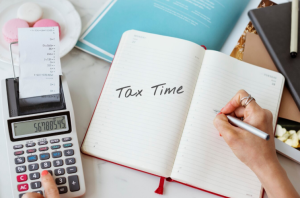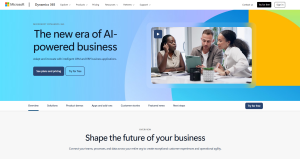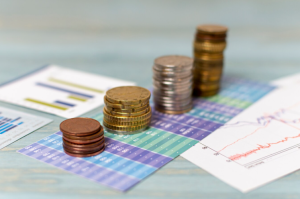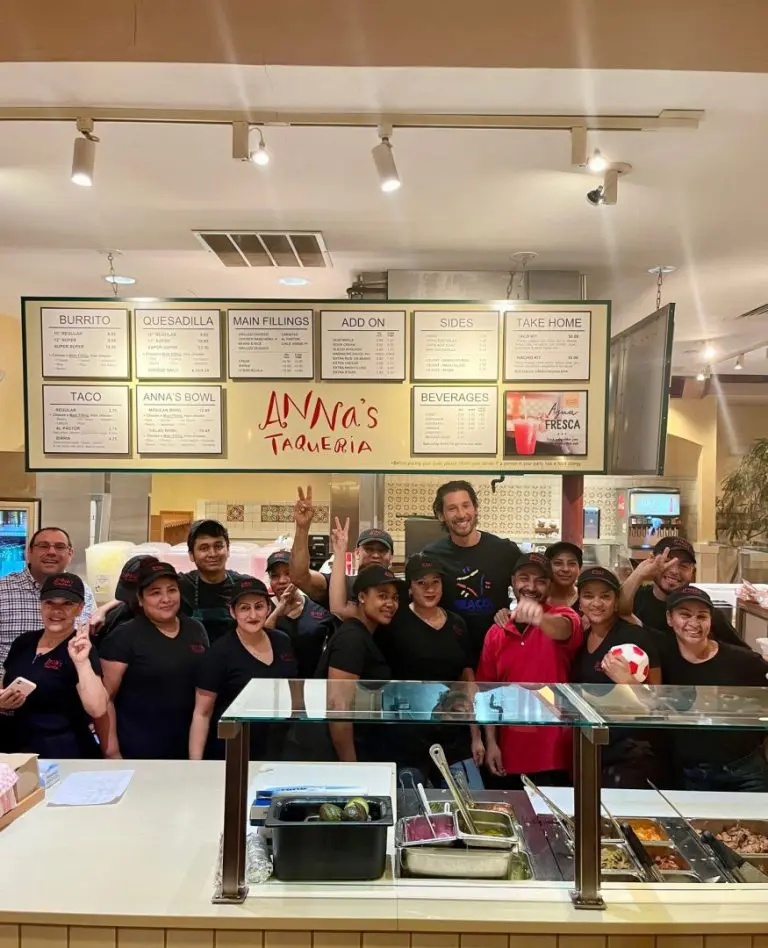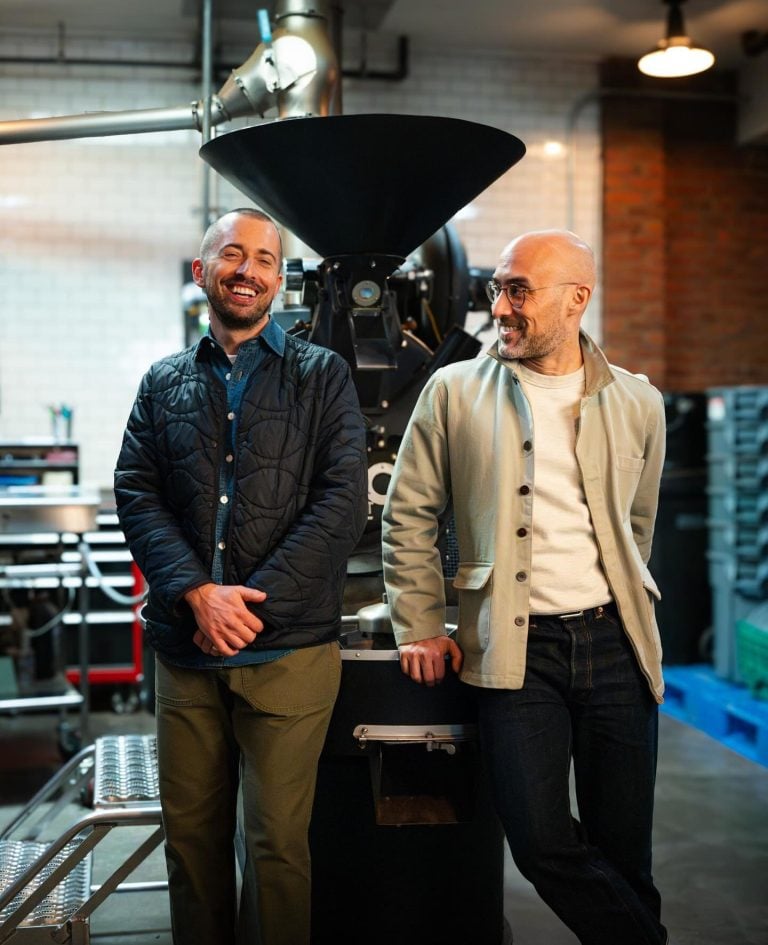Restaurant industry professionals, especially operators, know the harsh truth: every empty table negatively impacts potential sales growth and costs money.
The restaurants that thrive today, whether they are fine dining operators or casual dining operators, don’t just serve great food; they make decisions based on hard data to drive revenue. Their operators plan often involves leveraging data to make smarter choices about everything from menu items to marketing.
What if you could know exactly which menu items to promote for more sales? Which customers, especially your existing customers, should to target with new discounts or promotions? Which marketing channels, like email marketing, actually work to increase restaurant sales?
This isn’t theoretical. Your competition is getting smarter, likely using restaurant tech as part of their strategy for the year ahead. The restaurant down the street might already be analyzing which appetizers lead to the highest ticket values or which service staff generate the most upsells through effective selling. They understand that managing food costs and labor costs is crucial, but driving sales is paramount.
I’ve spent years helping restaurant owners turn data into dollars, achieving significant increase in restaurant sales. Understanding consumer spending habits is key.
These aren’t long-term strategies… These are practical, proven tactics – an effective way for many in the industry, including fast casuals – you can implement this month to see real results and increase sales. Generating more foot traffic and encouraging repeat visits are achievable goals.
No complex systems. No massive investments in new operations tech. Just smart, data-backed methods that focus on delivering value and boosting profits. It often involves suggesting simple changes that yield big results.
What makes these ten approaches different? They focus on what you already have—your current customers, your menu, and staff—optimizing them for maximum profit. A key focus is on retaining customers by enhancing the customer experience. A strong majority of sustainable growth comes from nurturing this base.
Ready to turn your point-of-sale system from a glorified calculator into a powerful tool for sales growth, giving you more control over your business?

Save 80% of delivery management time
We handle everything:
- Dedicated operations manager
- Real-time tracking dashboard
- Automated customer notifications
- Urgent issue resolution
Leveraging Data Analytics for Restaurant Sales
Turn your restaurant data into higher sales with POS systems and inventory tracking
Learn to make data-driven decisions that increase profits
Identify your best-selling items and peak times to optimize your menu and staffing
1. Collecting and Analyzing Customer Data
Data is the backbone of any successful restaurant strategy. Your restaurant generates valuable information every day through customer interactions, sales, and inventory movement. The key is knowing how to collect and use this data effectively.
Let’s start with the basics of how to gather this information. Your point-of-sale (POS) system is the primary tool for collecting customer data. Modern POS systems do more than just process payments—they track what items sell best, which servers sell the most, and what times are busiest. To maximize your data collection:
Ensure your POS system categorizes menu items properly (appetizers, entrees, desserts, drinks)
Train staff to enter accurate information for each sale
Set up your system to track:
Items ordered
Time of purchase
Server name
Table number
Payment method
Tip amount
Setting Up Customer Data Systems for Online Ordering and More
Beyond your POS, you need systems to track customer preferences and behaviors. This requires integrating several data sources:
Customer Reservation Systems: Use platforms like OpenTable or Resy to collect:
Customer names and contact information
Party size and visit frequency
Special occasions and preferences
No-show rates
Online Ordering Platforms: Services like DoorDash, UberEats, or your own online ordering system provide insights into:
Most popular takeout items
Peak delivery times
Average order values
Customer locations
Loyalty Programs: Implement a loyalty system that tracks:
Frequency of visits
Favorite menu items
Average spend per visit
Redemption rates for rewards
Once your data collection systems are in place, you need to analyze the information. Start by looking for patterns:
Identify your top-selling items by quantity
Calculate which items generate the most profit (not just revenue)
Determine peak hours and days for your restaurant
Track which menu items are often ordered together
Analyze seasonal trends in sales and customer preferences
2. Implementing Data-Driven Decision Making
Collecting data is only valuable if you use it to make informed decisions.
Start by creating a weekly data review process. Every Monday morning, review the previous week’s sales data and compare it to historical performance. Look for anomalies or trends that require action. For example, if you notice that appetizer sales drop significantly on Tuesdays, you might create a “Tuesday Appetizer Special” to boost sales.
Here’s a step-by-step approach to making data-driven decisions:
Identify your key performance indicators (KPIs):
Overall sales
Sales by category (food vs. drinks)
Average check size
Table turnover rate
Food cost percentage
Labor cost percentage
Set realistic goals for each KPI based on historical data
Create weekly and monthly reports to track progress
Share relevant data with your management team
Develop action plans for areas that need improvement
Creating Targeted Promotions
Your customer data reveals valuable patterns that can guide your promotional strategy. The key is to create promotions that target specific customer behaviors or preferences.
Here’s how to create data-driven promotions:
Identify specific problems or opportunities in your sales data:
Slow days or time periods
Underperforming menu categories
Items with high profit margins but low sales
Design promotions that address these specific issues:
Happy hour specials during slow periods
Bundle deals for complementary items
Limited-time offers for high-margin items
Set clear success metrics before launching any promotion:
Expected increase in sales
Target profit margin
Number of new customers
Test promotions for a set period
Analyze results against your goals
Keep successful promotions and modify or replace underperforming ones
The most effective promotions are those that feel personalized to your customers. Use your loyalty program data to send targeted offers:
Email birthday promotions to customers in their birth month
Send “we miss you” offers to customers who haven’t visited recently
Create VIP events for your top spenders
Menu Engineering Based on Data
Your menu is your primary sales tool, and data can help you optimize it for maximum profitability. Menu engineering is the process of analyzing and designing your menu based on profitability and popularity.
Menu Engineering Profit Impact: Ongoing menu engineering has the potential to increase restaurant profits by 10-15%.
Based on this analysis, redesign your menu to:
Position “star” items in high-visibility areas (top right corner, boxed sections)
Use descriptive language for “puzzle” items to increase their appeal
Consider bundling “workhorse” items with high-margin add-ons
Remove or replace “dog” items that aren’t meeting profit goals
Beyond item placement, use your data to make strategic menu decisions:
Reduce menu size if data shows certain items rarely sell
Adjust pricing based on cost analysis and customer price sensitivity
Create seasonal specials based on historical performance
Test new menu items in limited runs before full implementation
Restaurant chains like Chipotle and Starbucks attribute much of their success to data-driven menu decisions. You can apply the same principles to your restaurant, regardless of size.
Remember to update your menu analysis quarterly. Food costs change, customer preferences shift, and your menu should evolve accordingly. By making these adjustments based on real data rather than gut feeling, you’ll see measurable improvements in your restaurant’s profitability.
Boosting Restaurant Revenue with Data-Backed Offers
Data allows restaurants to create personalized offers that increase customer spending
Tracking and analyzing offer performance leads to more profitable promotions
Small adjustments based on data can yield significant revenue increases
The restaurant industry is growing steadily. To capture a larger share of this growing market, restaurants need to move beyond basic promotions to data-backed offers that deliver measurable results.
Data-backed offers differ from standard promotions because they target specific customer behaviors or preferences. They’re designed with clear goals and measurable outcomes. Rather than hoping a generic discount works, data helps restaurants create promotions that address specific needs while maximizing profit margins.
3. Personalized Offers Based on Customer Preferences
Customer data has become essential for creating effective restaurant promotions. When you understand your customers’ habits and preferences, you can design offers they’re more likely to accept. This targeted approach increases the effectiveness of your marketing budget while building stronger customer relationships.
Personalization Revenue Impact: Personalized restaurant marketing can increase revenue by 10-30%.
The starting point for personalization is collecting the right data. Most restaurants already gather valuable information through their point-of-sale systems, loyalty programs, and online ordering platforms. This includes:
Order history (most frequent items, average check size)
Visit frequency and timing (lunch vs. dinner, weekday vs. weekend)
Special requests or dietary preferences
Response to previous promotions
Celebration dates (birthdays, anniversaries)
Regular customers who feel valued through personalized offers are more likely to increase their spending and visit frequency.
Creating Segments for Targeted Offers, Including New Customers
The first step in personalization is dividing your customer base into meaningful segments. This allows you to create offers that appeal to specific groups. Common restaurant customer segments include:
New customers (first-time or recent visitors)
Regular visitors (based on frequency)
High-value customers (based on average check size)
At-risk customers (those whose visit frequency has declined)
Special occasion diners (celebration-focused visits)
For each segment, create offers that address their specific needs or behaviors. For example:
New customers: Offer an incentive for their second visit
Regular visitors: Offer a free appetizer with their next dinner order
High-value customers: Offer complimentary wine pairing with chef’s special
At-risk customers: Send a “We miss you!” offer
Special occasion diners: Offer a free dessert for their birthday celebration
Implementing a Tiered Loyalty Program
Loyalty programs provide a structured way to offer personalized incentives. Unlike generic programs that offer the same rewards to everyone, data-backed loyalty programs use tiered benefits that increase with customer engagement.
Steps to create a data-backed loyalty program:
Define clear tiers based on spending thresholds or visit frequency
Design meaningful rewards for each tier (focus on exclusivity for higher tiers)
Create clear paths for customers to advance to higher tiers
Set up automated systems to track progress and deliver rewards
Regularly communicate progress to members
For example, a three-tier program might include varying levels of discounts, rewards, and perks like priority seating or exclusive tastings depending on the tier.
By analyzing which rewards drive the most engagement, you can continuously refine your program to maximize its effectiveness and return on investment.
4. Monitoring Offer Performance
Creating data-backed offers is only the first step. The real power comes from tracking performance and making adjustments based on results. This creates a continuous improvement cycle that leads to increasingly effective promotions.
Tracking offer performance involves measuring specific metrics that show both the direct and indirect impact of your promotions. Key metrics to monitor include:
Redemption rate: The percentage of customers who use the offer
Average check size: How the offer affects overall spending
Profit margin: The actual profit generated from offer redemptions
New customer acquisition: How many new customers the offer attracts
Return rate: Whether customers who redeem offers return without promotions
With modern point-of-sale systems, tracking these metrics has become much simpler. Most systems can generate reports showing which promotions drive the most revenue or attract the most customers. This data helps restaurants identify which offers deserve more investment and which should be modified or discontinued.
Establishing Performance Baselines
Before launching any new offer, establish baseline metrics for comparison. This provides context for evaluating performance. Important baselines include:
Average check size without promotions
Typical customer visit frequency
Standard profit margins on menu items
Seasonal patterns in customer behavior
Day-of-week and time-of-day patterns
When analyzing offer performance, compare results against these baselines rather than looking at numbers in isolation.
Track these metrics in a consistent format that allows for easy comparison across different promotions. A simple spreadsheet with standardized metrics for each offer can help identify patterns and trends over time.
Making Data-Driven Adjustments
The most valuable aspect of monitoring performance is the ability to make informed adjustments. When an offer isn’t performing as expected, data can help identify what needs to change. Common adjustments include:
Offer value: Increasing or decreasing the discount or incentive
Timing: Changing when the offer is available (day, time, season)
Target audience: Narrowing or expanding who receives the offer
Communication: Adjusting how the offer is presented or delivered
Limitations: Adding or removing restrictions on redemption
For example, if data shows that a weekday lunch promotion has low redemption rates but high average check sizes, you might expand its availability to more customers rather than increasing the discount amount.
Testing is crucial when making adjustments. Rather than changing an entire promotion at once, test modifications with a small segment of customers first. This allows you to compare results directly and make evidence-based decisions about which changes to implement broadly.
The process of monitoring and adjusting offers should be ongoing. Even successful promotions can benefit from testing and refinement. By establishing a regular schedule for reviewing offer performance and implementing changes, restaurants can continuously improve their promotional strategy and maximize revenue growth.
Integrating these data-backed approaches to offers and promotions positions restaurants to capture a greater share of the growing market. As the industry continues to evolve, those who use data effectively will gain a significant competitive advantage.
Effective Restaurant Marketing Strategies 2025
Social media and influencer partnerships offer high ROI for restaurants
Email marketing still delivers high ROI in the restaurant industry
5. Leveraging Your Social Media Presence to Increase Awareness
In the digital age, social media has become a central tool for restaurant marketing. The platforms that tend to work best for restaurants include Instagram, Facebook, and TikTok, with each serving different purposes in your marketing mix. Instagram is ideal for high-quality food photography and behind-the-scenes content that shows the human side of your establishment.
Social Media Marketing Adoption: About 82% of restaurants in the United States use social media marketing as part of their growth strategies.
Facebook works well for community engagement and promoting events, while TikTok can showcase your restaurant’s personality through short, creative videos.
To maximize social media effectiveness, create a content calendar that plans posts around key dates, promotions, and menu changes. Use scheduling tools like Hootsuite or Buffer to maintain consistency even during busy periods.
Creating Platform-Specific Content Strategies
Each social platform requires a slightly different approach. On Instagram, focus on creating a cohesive visual identity with professional food photography and consistent filters.
Instagram Engagement Advantage: Instagram boasts a 2.2% per-follower interaction rate for restaurant social media, significantly higher than Facebook’s 0.22%.
For Facebook, emphasis should be placed on building community through customer interaction. Facebook events for special occasions can drive significant reservations when promoted properly.
TikTok requires a more authentic, behind-the-scenes approach. Short videos showing recipe preparation, kitchen activities, or staff personalities perform exceptionally well.
6. Elevating Brand Visibility Through Influencers
Influencer marketing has shifted from a trend to a fundamental restaurant marketing strategy. The key is finding individuals who align with your restaurant’s values and aesthetic.
Local influencers who specialize in food content can drive targeted traffic to your establishment. When selecting influencers, look beyond follower count and examine engagement metrics, audience demographics, and content quality. The most successful restaurant-influencer partnerships begin with an authentic appreciation for your food and concept.
Setting clear objectives is critical for influencer campaigns. Are you aiming to increase awareness, promote a new menu item, or drive traffic during slow periods? Define these goals before approaching influencers. Compensation models vary widely.
Hosting Strategic Influencer Events
Dedicated influencer events have proven particularly effective for generating buzz. A collective influencer dinner where local food influencers are invited to sample your menu can generate numerous posts and stories, potentially reaching many local diners.
Track metrics carefully for every influencer partnership. Beyond basic engagement stats, implement tracking codes or special offers mentioned by each influencer to measure direct conversion rates.
Influencer-recommended dishes typically see an increase in orders in the weeks following promotion. This effect can be maximized by ensuring your staff knows which items have been featured by influencers, allowing them to mention this social proof when making recommendations to guests.
7. Email Marketing: The Highest ROI Channel
Despite newer marketing channels emerging, email marketing continues to deliver exceptional results for restaurants.
Email Marketing ROI: Email marketing yields an average ROI of $36 for every $1 spent in the restaurant industry.
Segmentation is the secret to email marketing success. Basic segments might include first-time visitors, regular customers, big spenders, and lapsed customers.
Effective restaurant email campaigns follow distinct patterns. Birthday offers and welcome emails for new subscribers can perform well. Re-engagement campaigns targeting customers who haven’t visited recently can also be effective when offering the right incentive.
Crafting High-Converting Email Content
Email content should focus on value rather than direct selling. The most effective restaurant emails include:
Professional food photography
Personalized subject lines
Clear calls-to-action like “Reserve Now” or “Order Online”
Mobile optimization
Email frequency matters significantly. Data indicates that sending emails with moderate frequency achieves optimal engagement rates. More frequent emails lead to higher unsubscribe rates, while less frequent contact results in lower brand recall.
For implementation, platforms like Mailchimp, Constant Contact, and Campaign Monitor offer restaurant-specific templates and automation features.
Email Marketing Automation Usage: 67% of restaurateurs have automated their email marketing efforts.
8. Local SEO and Google Business Profile Optimization
Local search engine optimization represents one of the most overlooked yet high-impact marketing strategies for restaurants.
Start with claiming and optimizing your Google Business Profile (formerly Google My Business). Restaurants with complete profiles including current hours, photos, menus, and responses to reviews receive more clicks than incomplete listings. Adding high-quality photos to your profile increases the likelihood of customer engagement.
Review management is perhaps the most critical aspect of local SEO. Restaurants that respond to reviews see a higher conversion rate from profile viewers to customers. The optimal response time is prompt, with personalized replies that address specific points raised in each review.
Building Citations and Local Links
Beyond Google, ensure your restaurant is listed accurately on other key platforms like Yelp, TripAdvisor, and local business directories. Consistency in your name, address, and phone number (NAP) across all platforms improves search ranking.
Local link building also proves effective. Partner with local food bloggers, neighborhood websites, and community organizations to generate authentic backlinks.
A practical implementation plan should allocate resources for responding to reviews daily, updating business listings monthly, and actively seeking local partnership opportunities quarterly.
Driving Customer Engagement in Dining Experiences
Create personal connections with customers through well-trained staff and special events
Build data-backed loyalty programs that reward repeat visits
Use customer feedback to continuously improve the dining experience
The restaurant business thrives on customer relationships. When guests feel valued and excited about your restaurant, they return more often and spend more money. Let’s look at two main ways to boost customer engagement and increase sales.
9. Enhancing In-Restaurant Experience
The in-person dining experience makes a lasting impression on your customers. Every interaction with your staff, the atmosphere, and the overall service quality affects whether a customer will return. Restaurants that focus on creating exceptional experiences see higher customer satisfaction, more repeat visits, and better word-of-mouth marketing.
Staff Training Programs That Drive Sales
Start by creating a structured training program for all staff. This should include:
Product knowledge – Staff should know every item on the menu, including ingredients, preparation methods, and potential allergens
Service standards – Define clear expectations for greeting timing, check-ins, and table maintenance
Problem-solving skills – Teach staff how to handle customer complaints effectively
Upselling techniques –
The training shouldn’t stop after onboarding. This ongoing investment pays off through better retention and service quality.
Creating Memorable Dining Events
Special events give customers a reason to visit your restaurant beyond regular meals. They create buzz, attract new customers, and make your existing customers feel special.
Follow these steps to create successful dining events:
Identify your audience – Determine which customer segments would be most interested in special events
Set clear goals – Define what you want to achieve (introducing new menu items, filling slow nights, attracting new demographics)
Choose your event type – Options include:
Themed dinners tied to holidays or special occasions
Chef’s tables or tasting menus
Wine or beer pairing dinners
Cooking classes or demonstrations
Live entertainment nights
Promote effectively – Use your social media, email list, and in-store signage to spread the word
Create exclusive value – Offer something guests can’t get during a regular visit
Collect feedback – Survey participants afterward to improve future events
When planning your events calendar, aim for consistency while keeping content fresh and exciting. This builds anticipation and gives customers a reason to check your communications regularly.
10. Building Loyalty Programs for Repeat Business
Loyalty programs turn occasional diners into regular customers. They work because they make customers feel valued while giving them financial incentives to return. The most effective loyalty programs are simple to understand but offer meaningful rewards.
Designing an Effective Loyalty Structure
Follow these steps to create a loyalty program that drives repeat business:
Choose your program structure – Options include:
Points-based systems
Visit-based rewards
Tiered membership (with increasing benefits)
Subscription model (fee for special perks)
Set clear earning and redemption rules – Make it easy for customers to understand how to earn and use rewards
Offer valuable rewards – Consider these options:
Free menu items or discounts
Early access to new menu items
Priority reservations
Special event invitations
Customized offerings based on preferences
Choose your technology – Options include:
Standalone loyalty apps
POS system integrated loyalty
Simple punch cards (for smaller operations)
Digital wallets integration
Train staff to promote the program – Ensure every customer knows about it
Create a marketing plan – Promote through all channels (website, social media, in-store)
Personalizing the Loyalty Experience
The most effective loyalty programs use data to create personalized experiences. This makes customers feel recognized and valued.
Follow these steps to personalize your loyalty program:
Collect the right data – Ask for:
Basic information (name, email, birthday)
Food and drink preferences
Dining habits (lunch vs. dinner, weekday vs. weekend)
Track purchase history – Analyze:
Favorite dishes
Average spend
Visit frequency
Common add-ons or modifications
Segment your loyalty members – Create groups based on:
Visit frequency (frequent vs. occasional)
Spending habits (high vs. low average check)
Menu preferences (vegetarian, wine enthusiasts, etc.)
Create targeted offers for each segment:
Send birthday offers automatically
Alert customers when their favorite dish gets a seasonal update
Offer incentives when a regular customer hasn’t visited in a while
Communicate regularly but not excessively – Find the right balance between staying top-of-mind and overwhelming customers
For example, if data shows a customer always orders dessert, you might send them a special invitation to a dessert tasting event. If another customer typically dines at lunch, send them lunch-specific promotions rather than dinner deals.
Measuring Loyalty Program Success
To ensure your loyalty program drives sales rather than just giving away margin, track these key metrics:
Enrollment rate – Percentage of customers who join the program
Active membership – Percentage of members who have visited recently
Visit frequency – How often members visit compared to non-members
Average check size – Do members spend more per visit?
Redemption rate – Percentage of earned rewards that get used
Customer Lifetime Value (CLV) – Total revenue expected from a customer over their relationship with your restaurant
Set up monthly reporting to review these metrics and make adjustments as needed. If certain rewards aren’t being redeemed, replace them with more attractive options. If enrollment is low, simplify the sign-up process or increase staff promotion.
When you combine well-trained staff with an effective loyalty program, you create a powerful system for customer retention and increased sales.
Remember that customer engagement is an ongoing process. Collect feedback regularly through comment cards, digital surveys, and direct conversations. Use this information to refine your training programs, events, and loyalty offers to keep customers coming back and spending more with each visit.
Advanced Tips for Maximizing Restaurant Profit
Focus on profit per plate, not just sales volume
Strategic menu engineering drives higher margins
Data-based staffing and pricing decisions increase profitability
Analyzing Cost-Effective Menu Design
Restaurant menus are more than just lists of foods and prices. They’re financial documents that directly impact your bottom line. Most restaurant owners focus on their best-selling items, but high sales volume doesn’t always translate to high profits. According to restaurant profitability expert Guy Leggatt, “Your best-selling dish might be costing you money. Instead of just tracking sales volume, start looking at profit per plate, menu placement, and what your team is pushing.”
Profitability Food Cost Benchmark: Profitable restaurants typically maintain food cost percentages between 28% and 32%.
Menu engineering starts with a thorough cost analysis of every item. Calculate the exact food cost percentage for each dish by dividing the ingredient cost by the selling price. Once you’ve identified your high-margin items, use strategic placement on your menu to highlight them. The top right corner and center of the menu typically receive the most attention from diners.
Beyond placement, consider the psychology of pricing. Test different pricing strategies and track the results to find what works best for your specific customer base.
Strategic Menu Rotation and Seasonal Planning
Seasonal menu planning isn’t just about using in-season ingredients—it’s a profit-maximizing strategy. Seasonal ingredients typically cost less when they’re abundant, allowing you to maintain higher margins while keeping menu prices stable. Create a calendar for menu revisions based on ingredient availability and cost fluctuations throughout the year.
Many successful restaurants operate with a core menu of proven high-margin items supplemented by a rotating selection of seasonal specials. This approach keeps your offering fresh while maintaining financial stability. According to Sculpture Hospitality, you should “revise your menu strategically. Highlight high-margin items, analyze customer preferences, and consider introducing seasonal specials to keep offerings fresh and enticing.”
For deeper understanding, study “Menu Engineering: A Practical Guide to Menu Analysis” by Professor Donald Smith, which offers detailed frameworks for menu analysis and design that go beyond simple cost calculations to incorporate psychology and design principles.
Exploring Upselling, Cross-Selling, and Add-Ons Techniques
Effective upselling increases check averages without requiring more customers or raising base prices. The key distinction between successful upselling and pushy selling lies in customer value. Train your staff to understand that good upselling enhances the customer’s experience while bad upselling feels like pressure.
Upselling Revenue Potential: Upselling alone can boost restaurant revenue by up to 43%.
Start by analyzing your POS data to identify natural pairings that customers already order together. These represent organic cross-selling opportunities. Create a comprehensive upselling guide that matches appetizers, sides, drinks, and desserts with main courses based on actual ordering patterns.
The timing of upselling matters significantly. Research indicates that customers are most receptive to additional purchases at the beginning of their meal and immediately after finishing their main course. Train servers to suggest appetizers or premium drinks when guests first sit down, and to present dessert options soon after clearing main course plates—not after a long wait that allows the dining momentum to fade.
Staff Training for Higher Check Averages
Proper staff training transforms servers from order-takers to sales consultants. Implement weekly micro-training sessions focused on specific upselling techniques. Rather than generic instructions to “sell more,” provide precise language for recommendations. For example, instead of “Would you like a drink?” train servers to say “Our house-made sangria pairs perfectly with the paella you ordered.”
Create contests and incentives around upselling specific high-margin items each week. Track individual server performance through your POS system and recognize top performers.
For comprehensive training resources, “The Art of Suggestive Selling” by Kerry Bannigan provides detailed scripts and psychological insights into effective restaurant upselling that feels natural, not forced.
Optimizing Labor Costs Through Data Analysis
Labor typically consumes a significant portion of a restaurant’s revenue. Most restaurants schedule based on intuition rather than data, leading to overstaffing during slow periods and understaffing during unexpected rushes. Start tracking your sales per labor hour to identify patterns and optimize scheduling.
Implement a labor management system that tracks not just total labor hours but sales per labor hour by day part. This more granular analysis often reveals that what seems like a “slow night” might actually have a very busy hour followed by dead time. Once you’ve collected this data, create staffing templates based on historical patterns rather than gut feeling.
Cross-training staff increases scheduling flexibility and reduces labor costs. When servers can also work as hosts, or prep cooks can work the line in a pinch, you gain scheduling options that maintain service quality with fewer total staff hours. The most profitable restaurants maintain a core of full-time staff supplemented by part-time workers who can be scheduled flexibly based on anticipated business volume.
Predictive Staffing Models
Advanced restaurants are moving beyond historical data to predictive staffing models. These systems incorporate weather forecasts, local events, and historical trends to predict staffing needs with greater accuracy.
Restaurant business strategist Jim Taylor notes, “Most restaurants don’t have a profit problem, they have a math problem. Cover count, average spend, and covers per labor hour—balancing these is where profit margins are won or lost.” Implementing a data-driven approach to labor scheduling typically yields labor savings without reducing service quality.
For deeper implementation guidance, “Restaurant Resource Management” by Douglas Brown offers comprehensive frameworks for labor optimization that balance service quality with cost control.
Pricing Strategies Beyond Simple Increases
Price increases are the most direct path to higher profits, but across-the-board increases risk customer pushback. Smart pricing strategy involves surgical adjustments based on price elasticity—how sensitive demand for specific items is to price changes.
Start by identifying price-insensitive items. These are typically signature dishes, unique offerings customers can’t get elsewhere, or items with perceived premium value. Conversely, items that compete directly with offerings at nearby restaurants typically show high price sensitivity.
Psychological pricing thresholds are critical. Testing price elasticity through limited-time “specials” at different price points provides valuable data before making permanent menu changes.
Value Engineering vs. Price Increases
Sometimes the best pricing strategy isn’t raising prices but reengineering the value proposition. Consider adjusting portion sizes, ingredient quality, or presentation rather than simply increasing prices.
In high-cost ingredient categories like protein, consider creative substitutions that maintain customer satisfaction. For example, some restaurants have successfully introduced blended burgers that reduce costs while actually increasing customer satisfaction scores due to enhanced juiciness and flavor.
Business management platform NetSuite emphasizes this comprehensive approach: “Improving the customer’s overall experience, analyzing point-of-sale (POS) data to determine the most profitable menu items, devising special offers that will appeal to customers, being more strategic about reducing food and labor costs, and creating a vibrant social media presence to engage customers… Constantly adjusting these strategies based on performance is essential.”
For deeper insights into restaurant pricing strategies, “The Psychology of Menu Design” by Gregg Rapp explores the complex relationship between pricing, psychology, and profit in restaurant settings.
Inventory Management Systems for Reduced Waste
Food waste directly impacts restaurant profit margins. The average restaurant wastes food purchased before it ever reaches a customer’s plate. Implementing inventory management systems that track waste sources can reduce this figure, instantly boosting margins.
Food Waste Scope: Approximately 40% of food in the U.S. goes uneaten, with 30% ending up in landfills.
Start by conducting a waste audit. For one week, place labeled containers in the kitchen to collect and weigh different types of waste: prep waste, spoilage, cooking errors, and plate waste returned from customers. This audit typically reveals patterns that simple observation misses. For example, many restaurants discover that certain vegetables are consistently over-ordered and under-utilized.
Implement a first-in, first-out (FIFO) inventory system with clear labeling. Train staff to properly rotate stock and understand the difference between “use by” and “best by” dates. Many items remain safe and usable past their peak quality date. Develop secondary uses for ingredients approaching their quality limit—yesterday’s bread becomes today’s croutons or bread pudding.
Technology-Enabled Inventory Control
Modern inventory management systems use predictive ordering based on historical sales data, upcoming reservations, and even weather forecasts. These systems can reduce inventory holding while simultaneously reducing stockouts. Some advanced systems even track individual ingredient usage against theoretical usage based on sales, identifying potential theft or overportioning issues.
For restaurants not ready to invest in enterprise inventory systems, even basic spreadsheet-based par level systems can significantly reduce waste. Establish minimum and maximum inventory levels for each ingredient based on usage patterns and shelf life. Order only enough to reach the maximum level, accounting for existing inventory.
For comprehensive guidance on inventory management, “Restaurant Inventory Management: A Practical Guide” by Francis Loughran provides detailed systems for restaurants of all sizes, from basic manual systems to advanced technology implementations.
Troubleshooting Common Issues
Identify and solve problems that harm sales
Fix customer decline and operational bottlenecks
Use data to guide all improvement efforts
Addressing Declining Customer Visits
Noticing fewer customers walking through your door can be stressful. The key to reversing this trend is adopting a systematic approach to identify what’s driving customers away. First, collect feedback through multiple channels to get a complete picture of customer concerns.
Start by setting up a basic feedback collection system. Create short surveys that customers can fill out after their meal, either on paper or through a QR code leading to a digital form. Focus on key metrics like food quality, service speed, atmosphere, and value perception. For more detailed insights, set up a dedicated email address for feedback and actively encourage customers to share their experiences.
Next, analyze social media and review platforms. Check Google Reviews, Yelp, TripAdvisor, and your social media accounts weekly. Look for recurring themes in negative reviews. Are customers consistently mentioning long wait times? Food temperature issues? Unfriendly service? Create a spreadsheet to track these complaints by category, noting their frequency. This data will show you exactly where to focus your improvement efforts.
Taking Action on Customer Feedback
Once you’ve identified the main issues, prioritize them based on frequency and severity. For each priority issue, develop a specific action plan with measurable outcomes. For example, if reviews show that customers feel service is slow, track average service times during different meal periods. Then implement targeted solutions like adjusting staffing levels or streamlining your ordering process.
Create a feedback loop by implementing changes and then measuring their impact. If customers complained about food temperature, invest in better warming equipment, then follow up with temperature checks and new feedback collection. Share these improvements with your customers through social media and in-restaurant signage. Phrases like “You spoke, we listened” show customers you value their input.
For persistent issues that seem difficult to solve, consider bringing in outside expertise. Restaurant consultants can provide fresh perspectives on problems your team might be too close to see clearly. Their expertise often pays for itself through improved operations and increased sales.
Solving Operational Inefficiencies
Operational inefficiencies directly impact your bottom line by increasing costs and reducing service quality. The first step to improvement is conducting a thorough workflow analysis to identify bottlenecks in your restaurant operations.
Begin by mapping out your current processes across all areas of your restaurant: kitchen operations, service flow, ordering procedures, and inventory management. Observe operations during both peak and slow periods to identify different types of inefficiencies. Have managers shadow staff members through their shifts and document time spent on various tasks. Note any repeated delays, confusion, or frustration points that emerge.
Talk with your staff about operational challenges they face. Front-line employees often have the clearest view of what’s slowing them down. Host focused meetings where staff can share their insights without fear of criticism. Ask specific questions like “What tasks take longer than they should?” or “What processes cause the most problems during rush periods?”
Time-Tracking for Process Improvement
Implement time tracking for key restaurant processes to gather objective data. Use stopwatches or specialized restaurant management software to measure critical metrics:
Average time from order placement to kitchen receipt
Food preparation times for different menu items
Time from when food is ready to when it reaches customers
Table turnover rates during peak periods
Check closing and payment processing times
Compare your findings against industry benchmarks. If your kitchen consistently takes longer than benchmarks suggest, you’ve identified a critical inefficiency to address.
Next, analyze your physical layout. How many steps do servers take between the kitchen and dining area? Is there adequate prep space in the kitchen? Are POS stations positioned logically? Sometimes simple layout adjustments can dramatically improve efficiency.
Restaurant Tech Solutions for Restaurant Efficiency
After identifying your main operational bottlenecks, explore technology solutions that can address these specific issues. Modern restaurant technology can transform previously manual, error-prone processes into streamlined operations.
Start with your point-of-sale (POS) system, which should be the central hub of your restaurant technology. If your current POS isn’t serving your needs, consider upgrading to a cloud-based system that integrates with other tools. Modern POS systems can route orders directly to kitchen displays, track inventory in real-time, and provide valuable data on order patterns and timing.
For kitchen operations, kitchen display systems (KDS) can replace printed tickets, reducing errors and improving coordination between prep stations. These systems can also track preparation times, helping you identify which dishes or stations are creating bottlenecks.
Implement inventory management software that integrates with your POS to track ingredient usage in real-time. This reduces the labor needed for manual inventory counts and helps prevent both stockouts and over-ordering. Look for systems that can automatically generate purchase orders based on preset par levels and actual usage data.
For front-of-house operations, consider tablet-based ordering systems that servers can use tableside. These systems reduce order errors by eliminating the need to transfer handwritten notes to the POS, and they can speed up service by sending orders to the kitchen instantly.
Self-service kiosks or online ordering systems can further streamline operations during busy periods by allowing customers to place orders without staff assistance. These technologies not only improve efficiency but also collect valuable data on customer preferences that can inform your menu engineering efforts.
When implementing new technology, plan for adequate staff training. Schedule multiple training sessions before full implementation and designate “super users” who can help troubleshoot problems. Monitor key metrics both before and after technology implementation to measure the impact on efficiency and customer satisfaction.
Remember that technology should solve specific problems, not create new ones. Start with your biggest pain points and implement solutions one at a time, ensuring each new system is fully integrated before moving to the next.
Further Resources and Reading
Learn where to find advanced restaurant data analytics resources
Discover books and tools for deeper sales optimization strategies
Connect with industry communities for ongoing professional development
Restaurant Industry Reports and Data Sources
Restaurant professionals need access to quality data sources to make informed decisions. The National Restaurant Association publishes an annual “State of the Industry Report” that contains crucial market trends, consumer behavior patterns, and forecasts.
For real-time industry insights, OpenTable’s State of the Industry dashboard provides current data on seated diners from online reservations. The dashboard lets you filter by region or metro area, making it particularly valuable for benchmarking your restaurant’s performance against local competitors.
Toast POS and TouchBistro regularly publish comprehensive reports with operational statistics that can inform your strategy. Understanding these industry-wide statistics helps put your restaurant’s struggles in context and identify common solutions.
Online Learning Platforms and Courses
Several platforms offer specialized courses for restaurant professionals looking to enhance their data analytics skills. Cornell University’s School of Hotel Administration provides online certificate programs in restaurant revenue management and food and beverage analytics. These courses teach practical applications of data analysis in restaurant settings.
LinkedIn Learning and Coursera host courses on restaurant management with specific modules dedicated to data analysis and sales optimization. The “Restaurant Management: Data Analytics” course on Coursera covers POS system data extraction, customer behavior analysis, and implementing data-driven strategies.
Harvard Business School Online offers a more advanced “Business Analytics” program that, while not restaurant-specific, provides valuable frameworks applicable to food service businesses. The program teaches predictive analytics techniques that help forecast sales and optimize inventory management.
For those seeking more technical skills, Google’s Data Analytics Professional Certificate provides training in tools like SQL and Tableau that can help restaurant managers analyze large datasets from their operations.
Technology Tools and Software Resources
Various software solutions can enhance your data collection and analysis capabilities. Beyond basic POS systems, tools like MarketMan and Sourcery provide detailed cost analysis and inventory management data that directly impact profitability.
Restaurant365 combines accounting, inventory, and labor management in one platform, giving operators a comprehensive view of their financial performance. The system can identify unprofitable menu items and highlight opportunities for cost savings.
For customer relationship management, SevenRooms and Tock offer platforms that capture detailed guest data beyond basic reservations. These systems track spending patterns, dietary preferences, and visit frequency, enabling highly targeted marketing campaigns.
Third-party delivery platforms like DoorDash and Uber Eats provide partner restaurants with analytics dashboards that show performance metrics for delivery orders. These insights can help optimize your delivery menu and pricing strategy based on actual ordering patterns.
Industry Communities and Networks
Joining restaurant industry communities provides access to peer knowledge and best practices. The Restaurant Technology Network (RTN) brings together restaurant operators and technology providers to share data strategies and technology standards.
Local restaurant associations often host data-focused workshops and networking events where operators can exchange ideas and solutions. These meetings frequently include presentations from successful operators who share their approaches to using data for sales growth.
Online communities like the Restaurant Owners Group on Facebook and the r/restaurateur subreddit provide forums where operators discuss data challenges and solutions. These communities offer real-world perspectives on implementing data strategies in various restaurant settings.
Industry conferences like the National Restaurant Association Show and FSTEC feature sessions specifically on data analytics and sales optimization. These events showcase emerging technologies and provide opportunities to connect with vendors offering data solutions.
Implementing Continuous Learning Systems
The most successful restaurants create internal systems for ongoing learning and improvement. Establishing a regular review schedule for key performance metrics ensures data insights translate into action. Consider setting aside time each week to review sales data, customer feedback, and marketing performance with your management team.
Creating a culture of data literacy among staff members improves implementation of sales strategies. Simple training sessions that help servers understand sales reports and customer patterns can increase their effectiveness in executing promotions and upselling.
Developing a consistent format for documenting successful strategies allows knowledge to accumulate over time. Keep detailed records of which promotions generated the highest sales increases, which menu items perform best during different seasons, and how staffing levels affect service quality and sales. This institutional knowledge becomes increasingly valuable as patterns emerge over multiple business cycles.
Testing new ideas on a small scale before full implementation reduces risk and builds confidence in data-driven approaches. For example, try new menu items as limited-time specials first, carefully tracking their performance before adding them permanently.
The restaurant industry continues to evolve rapidly, making ongoing education essential for sustained success. By establishing connections to quality information sources and creating systems for continuous learning, you position your restaurant to adapt quickly to changing market conditions and customer preferences.
Conclusion
Achieving consistent sales growth for your business doesn’t require luck—it requires data and smart action to increase restaurant sales. The strategies we’ve explored connect at a fundamental level: they all use customer information to make better business choices, a practice relevant for all operators, from fine dining operators to fast casuals.
From leveraging your POS system (restaurant tech) to identify popular menu items to creating targeted promotions and new discounts that actually work, these approaches give you more control over your restaurant’s financial future and revenue streams. Running effective loyalty programs is a fantastic way to encourage repeat visits.
Remember that consistent small changes create significant results. A strong majority of successful changes start small. Implement just one or two strategies this week—perhaps analyzing your menu profitability, considering food costs and labor costs, or creating simple loyalty programs. Track your results, particularly the impact on sales, make adjustments, and build momentum for the year ahead.
The restaurant industry changes quickly, influenced by shifts in consumer spending and the constant need for more foot traffic, but data helps you stay ahead. Your customers are telling you what they want. This often involves suggesting preferences through their ordering patterns on your website or in-store, their feedback, and social media engagement. They signal what provides real value.
When you listen carefully and respond thoughtfully – a key part of good service – you focus on retaining customers, creating both immediate more sales and long-term loyalty. The customer experience is paramount.
The most successful restaurants blend traditional hospitality with modern data insights. They know who their current customers are and what those diners truly value, strengthening their brand identity. As you apply these strategies, you’re not just aiming to increase sales this month—you’re building a more resilient, customer-focused business poised for sustained growth and improved profits within the competitive industry.






